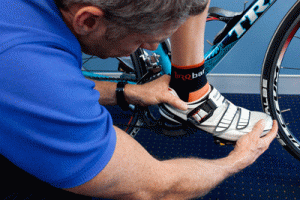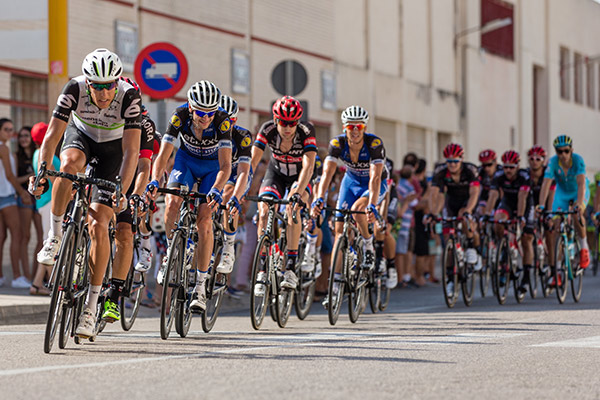What is the best bike position for cycling?
We are pretty spoilt in Canberra with great bike paths and world class mountain bike facilities. Many cyclists are happy to pick up a new bike fresh from the store and ride it blissfully unaware whether or not they are in the optimum position to maximise efficiency and minimising injury. There are many factors that in combination, will help you to find the best bike position for cycling.
There have been many studies into optimal seat height to increase pedaling efficiency, most based on oxygen consumption with little regard to the biomechanical features of the cyclist. These studies typically do not consider the cleat position nor the pedaling technique of the rider in determining pedalling efficiency. There is also no regard to saddle compression which can make a difference to optimal seat height by a few millimetres, a small amount indeed but by no means insignificant in terms of the optimal bike position.
Such things as leg length differences (anatomical and functional), muscle shortness, foot and leg alignment, upper leg (femur) versus lower leg (tibia) length, pelvic alignment (especially rotations) and hip flexibility can all influence the optimal seat height position achieved by the rider.
What tends to work best is achieving as close to the optimal seat height with respect to the biomechanics of the rider – in short fitting the bike to the biomechanics of the rider. Having the seat too high can lead to low back and sciatic pain, too low can bring on knee issues.
One of the easiest ways to make you faster on a bike is to become more aerodynamic. It has been shown that as you increase in speed, wind resistance increases exponentially whilst rolling resistance remains constant. Consequently, at 30 km/h wind resistance is approximately 90% of the total resistance a rider must overcome to move forward. This doesn’t mean you need find a helmet that was designed by NASA, or lycra that would look less tight if it was painted on, but it would be helpful to get your body position right.
 I recently attended a conference on cycling biomechanics. A physiotherapist that spent several years working with the Australian Olympic Cycling Team presented that the optimal body angle to decrease wind resistance without compromising pedalling efficiency was found to be 20 degrees to the horizontal whilst keeping the spine in neutral. Sadly, unless you are Tony Martin or Fabian Cancellara this will be hard to maintain. Often we need to alter this position to look after achy backs or tight hamstrings. I certainly wouldn’t be able to adopt this position on my bike for long without previously undertaking a year’s worth of yoga. If a cyclist is too tight through their hamstrings then they will not have the flexibility to get into a more aerodynamic position with a neutral spine. Also, as Craig Honeybrook from Sport & Spinal Physiotherapy outlined on 12 February 2014 in his article “Core Stability and Cycling” there is a considerable amount of strength and core control required to hold this position.
I recently attended a conference on cycling biomechanics. A physiotherapist that spent several years working with the Australian Olympic Cycling Team presented that the optimal body angle to decrease wind resistance without compromising pedalling efficiency was found to be 20 degrees to the horizontal whilst keeping the spine in neutral. Sadly, unless you are Tony Martin or Fabian Cancellara this will be hard to maintain. Often we need to alter this position to look after achy backs or tight hamstrings. I certainly wouldn’t be able to adopt this position on my bike for long without previously undertaking a year’s worth of yoga. If a cyclist is too tight through their hamstrings then they will not have the flexibility to get into a more aerodynamic position with a neutral spine. Also, as Craig Honeybrook from Sport & Spinal Physiotherapy outlined on 12 February 2014 in his article “Core Stability and Cycling” there is a considerable amount of strength and core control required to hold this position.
One of the tools we use at Sport & Spinal Physiotherapy during our bike fittings is a sizing stem which allows us to adjust head stem angle and length. This means we can easily figure out how close to the ideal upper body position a cyclist can tolerate.
An essential part of bike fitting is also fitting the rider to the bike. Thus, I always look at prescribing exercises to the rider that will allow them to develop the strength and/or flexibility to attain the ideal position on the bike and maintain an efficient and safe pedalling technique.
The best advice I could give regarding bike setup is if you want to be happy and healthy on your bike is to get yourself a thorough assessment by a physiotherapist. Whilst your local bike shop may have a thorough understanding of bikes, they will not be able to assess and diagnose biomechanical issues in the rider that could significantly affect the overall position. Most bike shops will get you in an acceptable range and if you don’t have any biomechanical issues then it may in fact it may be very close. However, in my experience nearly all the riders I see have some biomechanical problems (even professional cyclists). Indeed, I would estimate that about 9 out of 10 cyclists we fit to bikes require a shim for an anatomical or a functional leg length difference. Also a physio can help prescribe exercises to help the cyclist achieve that ideal position. At Sport & Spinal Physiotherapy, we not only fit the bike to you, but we also fit you to your bike.
Call Sport and Spinal Physiotherapy on 62624464 or email to admin@sportandspinalphysio.com.au to enquire about a full bike assessment or a cycling related injury.
